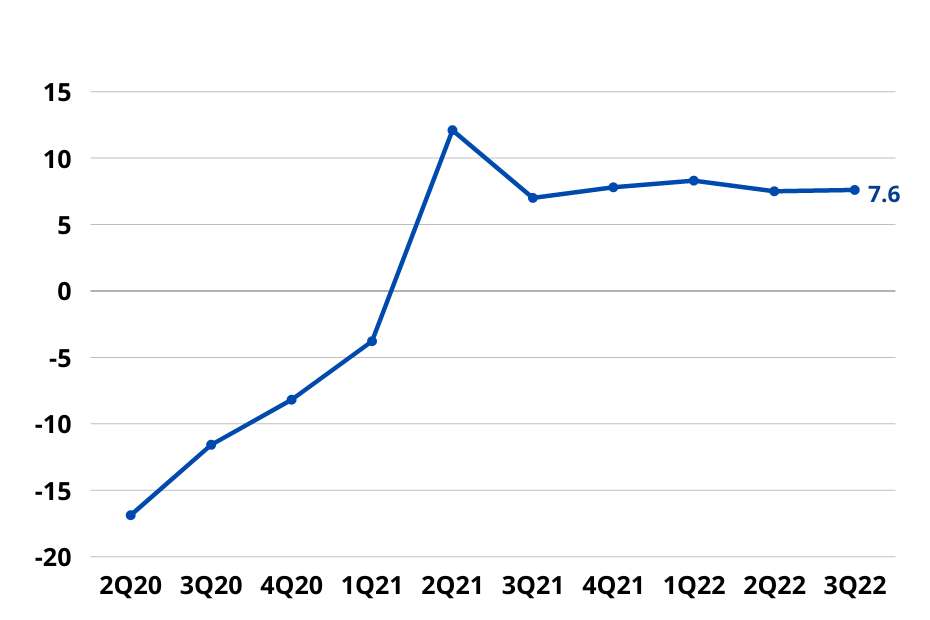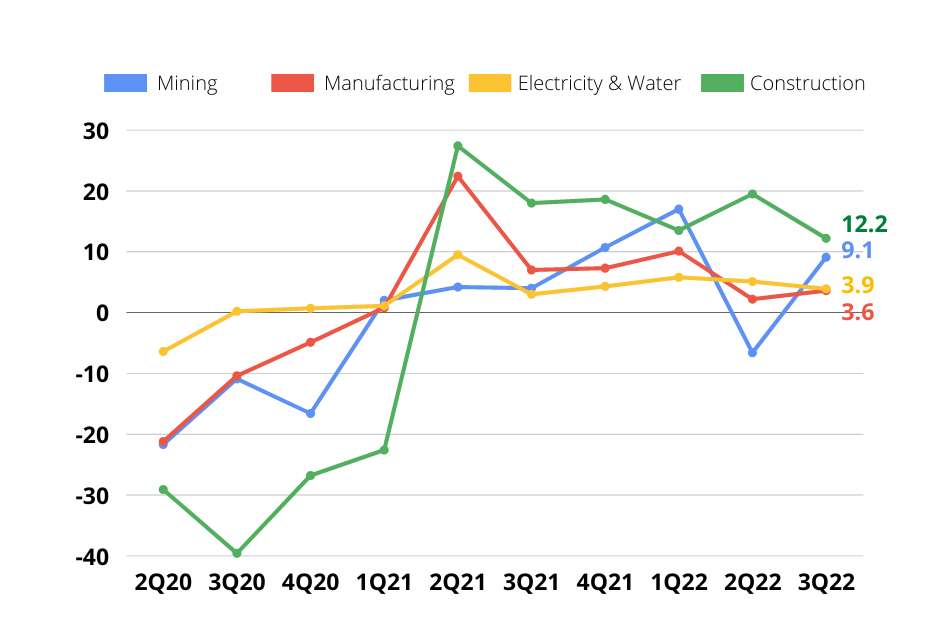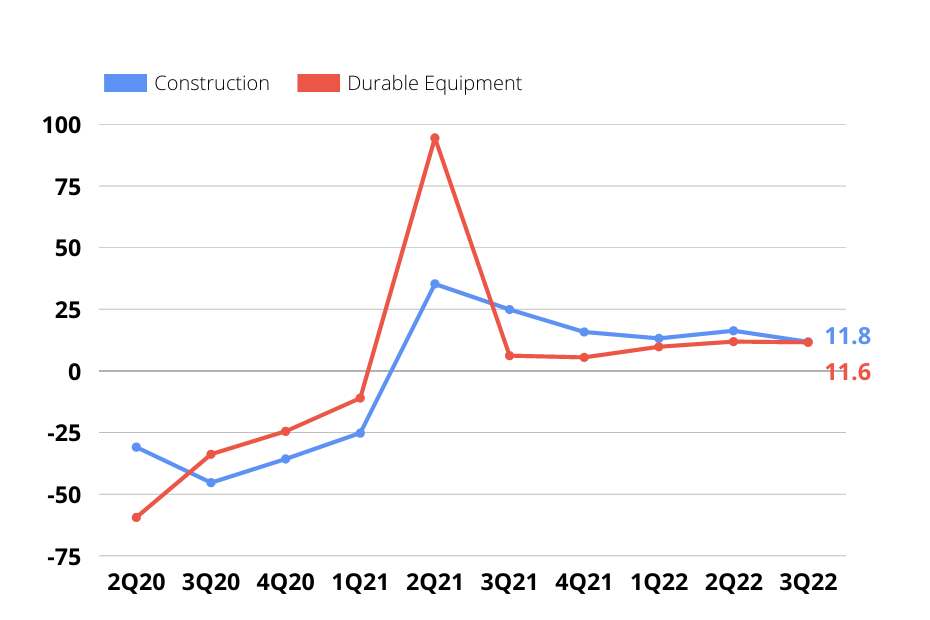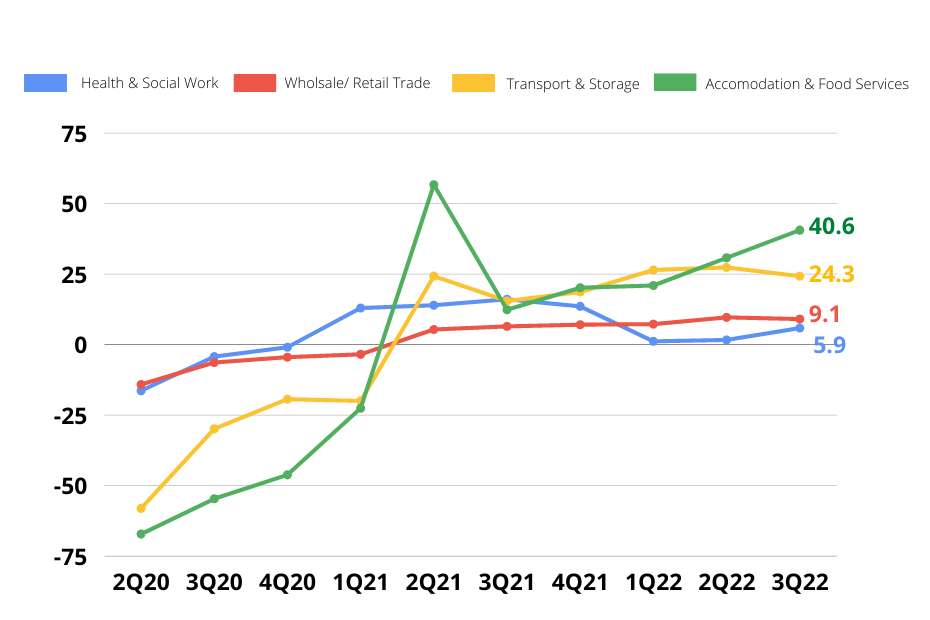PH Grows by 7.6% in Q3

The Philippines grew by 7.6% in the 3rd quarter, maintaining the country’s recovery trajectory for the past 5 quarters. The economy grew by 2.9% on a quarterly basis, higher than the growth posted during the last quarter.
The top performers were Accommodation and food service activities (40.6%), Transportation and storage (27.4%), Other services, which includes arts, entertainment, and other service activities (38.3%), and Construction (12.1%). Meanwhile, the reported laggards were Public administration and defense (0.7%), Agriculture, forestry, and fishing (2.2%), and Real estate and ownership of dwellings (3.1%).
Despite positive growth prospects, the government recognizes that inflation continues to be an alarming concern. “Our nation still faces a considerable burden in the form of high inflation due to heightened external risk and recent typhoons”. The combined damages brought by Super Typhoon Karding and Typhoon Paeng on agriculture and infrastructure reached P9 billion based on NDRRMC estimates. “To stabilize rising inflation and protect the purchasing power of Filipinos, the government is providing cash transfers, fuel discounts, and other forms of targeted assistance. We are also considering the extension of Executive Order 171 which significantly reduces tariffs on rice, pork, and corn thereby enhancing food security while food prices remain elevated,” he said.
Sec. Balisacan added that the “government will focus on climate change adaptation measures” and “will ensure a timely response to the damage inflicted by extreme weather events in the country”. MBC calls on the national and local governments to ensure robust disaster resilience programs in their respective cities and municipalities – to protect our industries, and most importantly, our people.
Growth in %
Insights from Key Economists
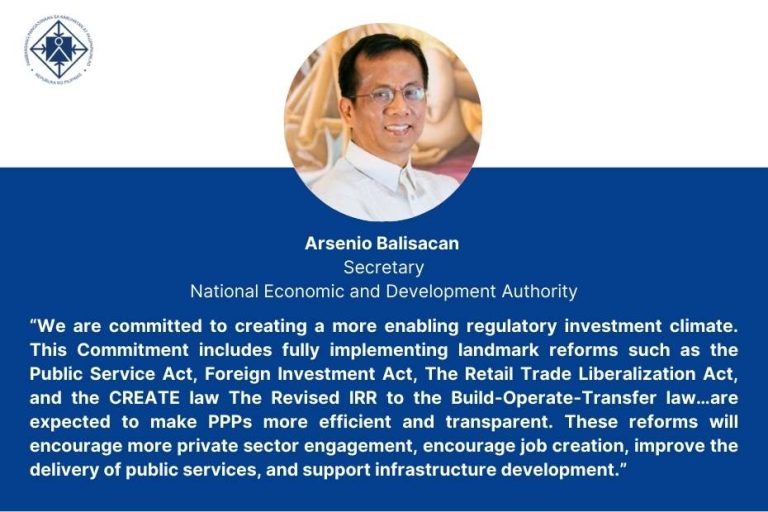
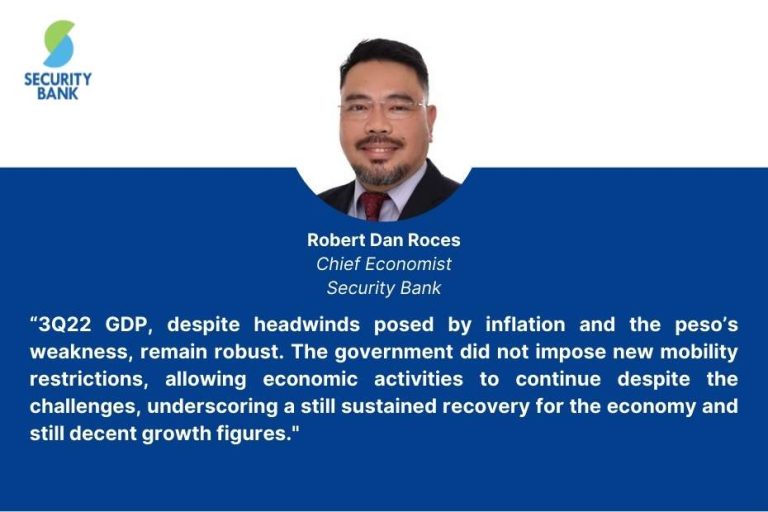


Co-presented by MBC's official Economy Partner

Share MBC's GDP Insights on Social Media
MBC's Economy Dashboard
The Makati Business Club (MBC) pilots its Economy Dashboard and provides a snapshot of key socio-economic data to help executives and policymakers make better decisions in today’s fast-changing economy.
Makati Business Club's 2022 Q2 Economic Highlights
PH Grows 7.4% in Q2, 7.8% in First Half
9 August 2022 – The Philippine economy grew by 7.4% in the second quarter, bringing the first half performance to 7.8% This sustains the positive growth started five quarters ago.
The top performers were the following: Accommodation and food services activities (29.9%), Transportation and Storage (27.1%), Construction (19.0%), and Other Services (39.5%) which includes arts, entertainment, and recreation according to National Statistician Usec. Dennis Mapa.
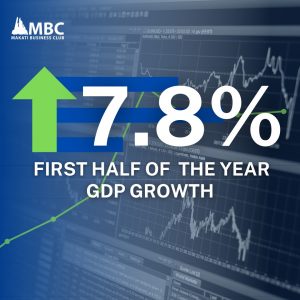
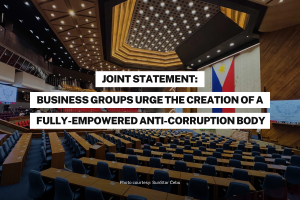
Joint Statement: Business Groups Urge the Creation of a Fully-Empowered Anti-Corruption Body
Joint Statement Business Groups Urge the Creation of a Fully-Empowered Anti-Corruption Body 10 December 2025 – We, the undersigned Philippine Business Groups, respectfully convey our
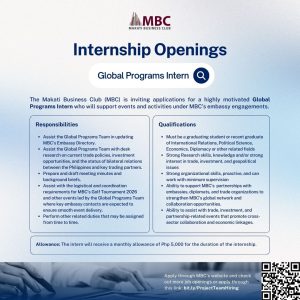
Global Programs Intern
Global Programs Intern The Makati Business Club (MBC) is inviting applications for a highly motivated Global Programs Intern who will support events and activities under

Embassy Engagements Project Officer
Embassy Engagements Officer Makati Business Club is seeking an Embassy Engagements Officer to manage and coordinate engagements with embassies for MBC events—including, but not limited

